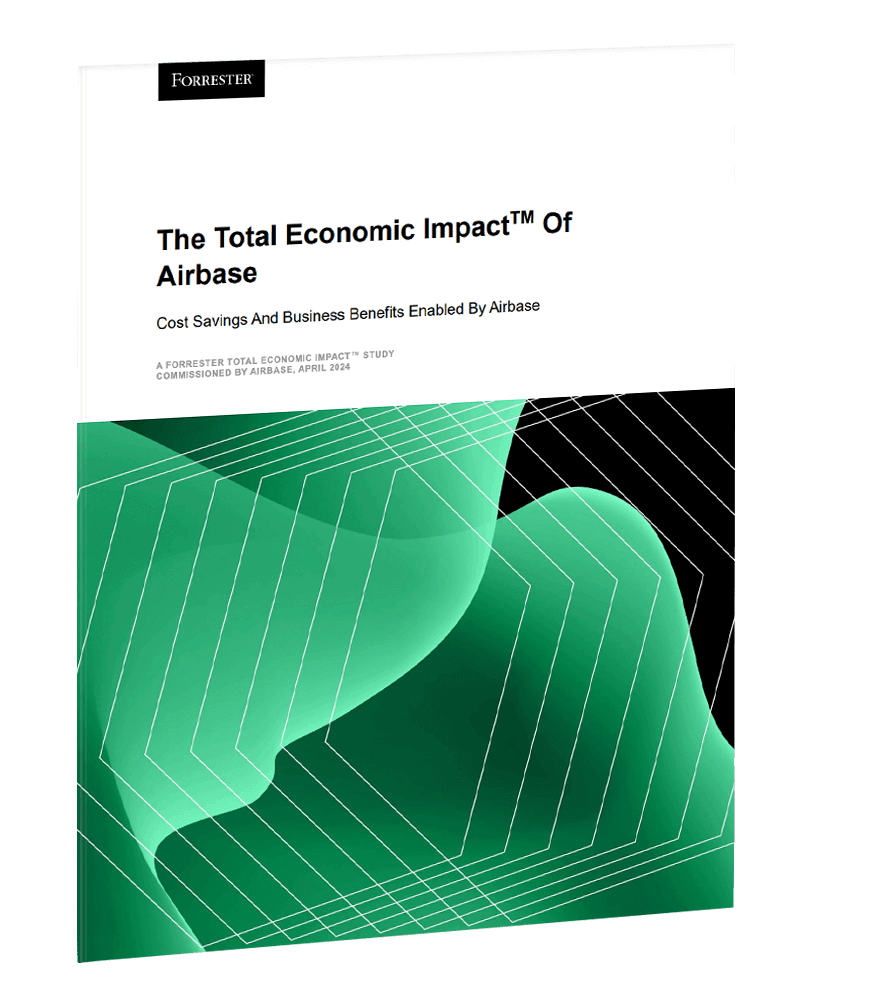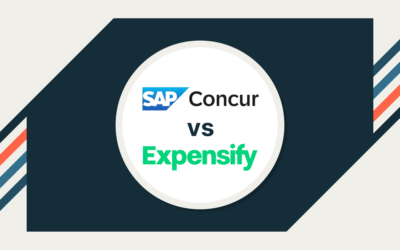According to the Association of Certified Fraud Examiners, expense reimbursement fraud schemes last an average of 18 months before they’re identified.
Effective expense reimbursement policies are essential for fraud prevention, smooth operations, and continuous compliance. As remote work becomes normalized, and as we all feel the sting of inflation, it’s important to streamline this process — so employees get reimbursed quickly and fraud doesn’t slip through the cracks.
A well-defined policy that covers all the reimbursement nuances between travel costs, office supplies, and other expenses prevents confusion and potential legal issues. In this guide, we’ll break down:
- The types of reimbursable expenses.
- How to set up policies.
- Tools that simplify the process.
TL;DR
Managing employee expense reimbursements well starts with clear policies and leans heavily on automated processes. Airbase simplifies submissions, approvals, and tracking, making it easy for employees and finance teams to stay compliant and organized.
What is an employee expense reimbursement?
Expense reimbursement is the process by which businesses repay employees for eligible costs incurred during the course of their work. These range from everyday operational expenses like office supplies to larger investments like business travel and conference fees.
A clear and efficient expense reimbursement policy ensures transparency, promotes good financial practices, and keeps employees happy. Without one, businesses risk compliance issues, tax headaches, and fraud.
But creating an iron-clad employee reimbursement policy is easier said than done. Companies have to consider their internal benefits, guidelines, and policies. They also have to navigate all the federal and state legal requirements and laws that dictate:
- Which business-related expenses are reimbursable (more on this next).
- How and when businesses must reimburse employees.
- Minimum coverage regulations for out-of-pocket expenses.
For example, some employers offer tuition reimbursement — but it may only apply to certain types of employees or specific certification programs. Other companies might have a mileage reimbursement policy that covers more than the federal mileage rate minimum. You may also have different policies for recurring expenses vs non-recurring expenses.
So it’s easy to see how developing a clear-cut, comprehensive, and transparent policy gets complicated — fast. But don’t check out just yet! We’ll show you how to create better expense reimbursement processes for unparalleled compliance and simplified management.
A clear and efficient expense reimbursement policy ensures transparency, promotes good financial practices, and keeps employees happy. Without one, businesses risk compliance issues, tax headaches, and fraud.
What reimbursable expenses are there?
You might be surprised to learn that, under the federal Fair Labor Standards Act, employers don’t actually have to reimburse employees for any business-related expenses — unless those costs would put them under the minimum wage.
But most states do have laws in place regarding “ordinary and necessary” employee expense reimbursements. And of course, making your employees pay for business expenses and then refusing to reimburse them is an excellent way to end up with no employees. (We recommend following these tips to reduce business expenses instead.)
Most companies opt to at least cover basic employee expenses like travel and supplies, while others make additional reimbursements — such as tuition costs and gym fees — part of their benefits packages.
Generally, business-related expenses are costs employees incur while performing their job duties and are eligible for reimbursement. They usually fall into one of the following categories:
- Travel expenses.
- Meals and entertainment.
- Office supplies and equipment.
- Professional development and training.
- Health and wellness.
We’ll dive into each one below and explain what type of expenses it includes, along with tips for a clear expense reimbursement policy.
What is considered a travel expense?
Travel expenses include costs like airfare, lodging, and transportation when an employee is traveling for business-related purposes. Some companies reimburse each of these expenses individually, while others offer a flat rate per diem for each day of travel.
Per diem is simple to implement and typically more favorable for employees, since they can choose to travel on a budget and keep more of their per diem pay. But individual business expense reimbursement, while more complicated and time-consuming, may ultimately cost the company less.
If you go the expense reimbursement route, your policy should clearly outline which travel-related expenses qualify for reimbursement — from Uber rides to the airport to hotel accommodations — and make sure you include limits and details for each line item, covering things like:
- Type of hotel stays that are covered (e.g., only three-star hotels and below).
- Any upper limits on reimbursable expenses (per occurrence, per day, or per trip).
- Transportation reimbursement specifics when an employee uses their personal vehicle.
- Whether employees need to book with a certain airline or hotel franchise.
- Reimbursement expectations for canceled trips.
Employees should fully understand what’s covered to avoid any surprises, and businesses must make sure their policies are compliant with tax regulations and state and federal rules.
What is considered a meal and entertainment expense?
Reimbursable meals and entertainment expenses include meals during business meetings, client dinners, or even employee outings. Here, you’ll need to specify how much employees can spend and what type of documentation is required for reimbursement.
Is a photo of a receipt acceptable? Or do they need to submit detailed expense reports?
Proper documentation — on both sides — ensures compliance with IRS guidelines, as these types of expenses are subject to tax considerations and may be considered taxable income.
You should also provide guidance on things like the following:
- Are tips reimbursed? If so, how much should employees tip?
- How to divide up shared items.
- Whether alcohol is allowed.
- What types of meals and entertainment are reimbursable expenses.
For example, if a manager takes their team out to dinner, should employees pay for their own meals and have the costs reimbursed individually, or should the manager pay for the entire outing using a company credit card?
What is considered an office supplies and equipment-related expense?
Office supplies and equipment-related expenses include items an employee realistically needs to do their job, like laptops, tools, or office furniture.
Before the rise of remote work, these expenses were fairly straightforward, and most businesses purchased these items directly, rather than reimbursing employees for them. But now, many companies offer stipends or reimbursement to help employees set up their home offices.
Make it clear what qualifies for reimbursement and how/if employees should secure approval before purchasing. As with other business expenses, set upper limits on cost and develop a streamlined reimbursement process to quickly refund any out-of-pocket expenses employees incur.
What is considered a professional development and training expense?
Expenses for professional development, such as courses, seminars, and certifications, may also be reimbursable if they directly relate to the employee’s role. Employers often encourage these investments to help employees grow, but your policies should clearly outline the types of training eligible for reimbursement.
For example, you might cover the cost of a project management certification but not a first aid or CPR class. Likewise, reimbursement may be at the manager’s discretion — they might approve certification coverage for a promising employee on a fast track to upper management, but deny a low-performer who likely won’t deliver a positive ROI on the investment.
What is considered a health and wellness expense?
Some businesses also cover health and wellness expenses as part of their employee perks, reimbursing things like gym memberships or mental health resources. While these aren’t always considered reimbursable in the traditional sense, including them in the reimbursement policy can boost employee morale and well-being.
These expenses include a broad range of products and services, so it’s especially important to be highly specific here on what’s covered and what’s not.
If you reimburse therapy expenses, is there a limit on the number of sessions? If you cover gym memberships, does that only include the basic membership, or can employees take advantage of ancillary services, like add-on fitness classes?

Expense Management Tour
How can I set up an expense reimbursement policy?
Your expense reimbursement plan might look a lot different than another company’s, depending on your industry, culture, state laws, business size, and more. But regardless of what you cover, here are the basic steps you should take to develop a comprehensive, transparent plan for business expense reimbursements.
- Define reimbursable expenses: Ensure both business leaders and staff know exactly what types of employee business expenses are eligible for reimbursement across each category.
- Establish limits and guidelines: Include caps on spending, any nuances or details, and the types of documentation employees need to submit with their expense reimbursement requests.
- Create a streamlined process: Use a tool like Airbase to automate the approval and reimbursement workflow for business expenses. With Airbase, you can integrate expense policies directly into your reimbursement platform, so employees stay compliant with minimal effort.
- Implement expense management software: Expense management software like Airbase allows for touchless expense reporting so that employees need only take a digital photo of their receipts and upload them to the system where they are ingested, categorized, routed, and booked to the GL.

Simplify your policy with pre-built workflows, so employees always know they’re in compliance when they make purchases.
For a touchless experience, platforms like Airbase allow employees to upload receipts directly with a simple smartphone snapshot and track reimbursements in real time.
Streamline your expense reimbursements with Airbase.
An efficient employee expense reimbursement policy sets clear guidelines, rules, and processes — so there’s no confusion when employees spend their own money on business-related expenses.
But a modern reimbursement platform takes the guesswork and tedious manual labor out of the equation with pre-built templates, automated workflows, and on-the-go expense tracking.
With Airbase’s suite of tools, reimbursements are hassle-free. Airbase’s receipt management feature allows employees to capture and upload receipts instantly, for better compliance and faster approvals. Employees can submit expenses in real time and get reimbursed quickly, without waiting until month-end.
And with features like virtual cards for specific vendors, automated audit trails, and seamless mobile app integration, your team can stay on top of their expenses — and reimbursements — effortlessly. Approvals even route directly to the right managers via email, Slack, or the mobile app for a streamlined expense reimbursement process, end to end.
Take the chaos, risk, and uncertainty out of employee expense reimbursement with Airbase, and let your teams focus on what they do best.
Get a free demo and see what Airbase can do for your expense management!
FAQ.
Still have questions about employee expense reimbursement? We have the answers here:
How do you account for employee expense reimbursement?
Employee expense reimbursements are considered business expenses, meaning you’ll record them in the company’s financials, but not as employee income. Companies typically track these costs through expense management software, which helps them keep detailed records for auditing and tax purposes.
Are employee expense reimbursements taxable?
In general, employee expense reimbursements are not taxable as long as they are made under an “accountable plan” and follow IRS rules. If the reimbursement doesn’t meet these guidelines, it may be considered taxable income.
What is an example of expense reimbursement?
An example of expense reimbursement is when an employee travels for business and submits receipts for their airfare, hotel, and meals. The company then repays the employee for these costs, assuming they align with company policy.
What is the IRS rule for expense reimbursement?
The IRS requires that expense reimbursements follow an accountable plan, meaning the expenses must have a business connection and be submitted within a reasonable timeframe, and any excess reimbursements must be returned. If these rules aren’t met, the reimbursement may be treated as taxable income.
 Jira Integration – Streamline Your Workflows
Jira Integration – Streamline Your Workflows  Ironclad Integration – Simplify Legal Operations
Ironclad Integration – Simplify Legal Operations  Asana
Asana 





